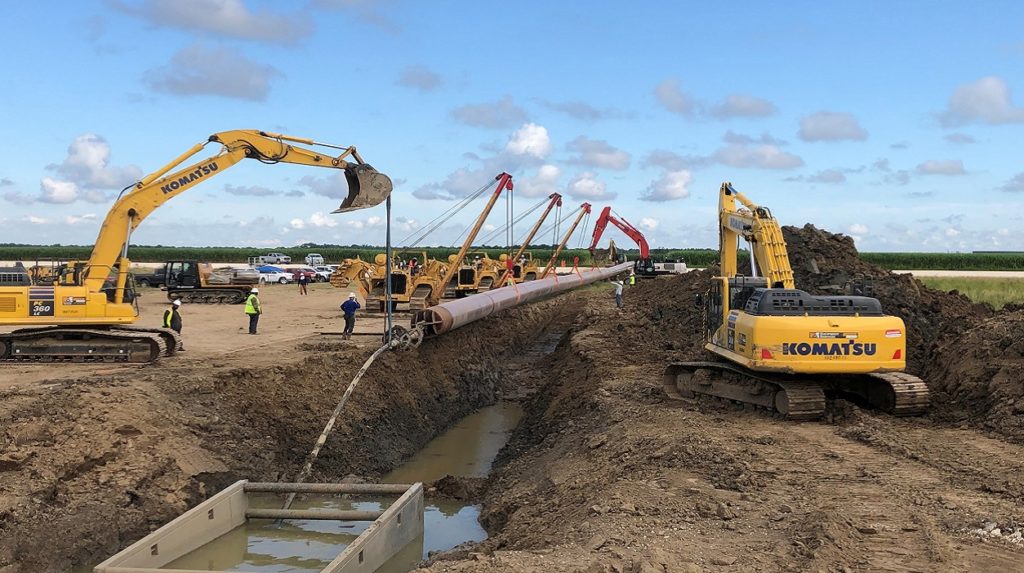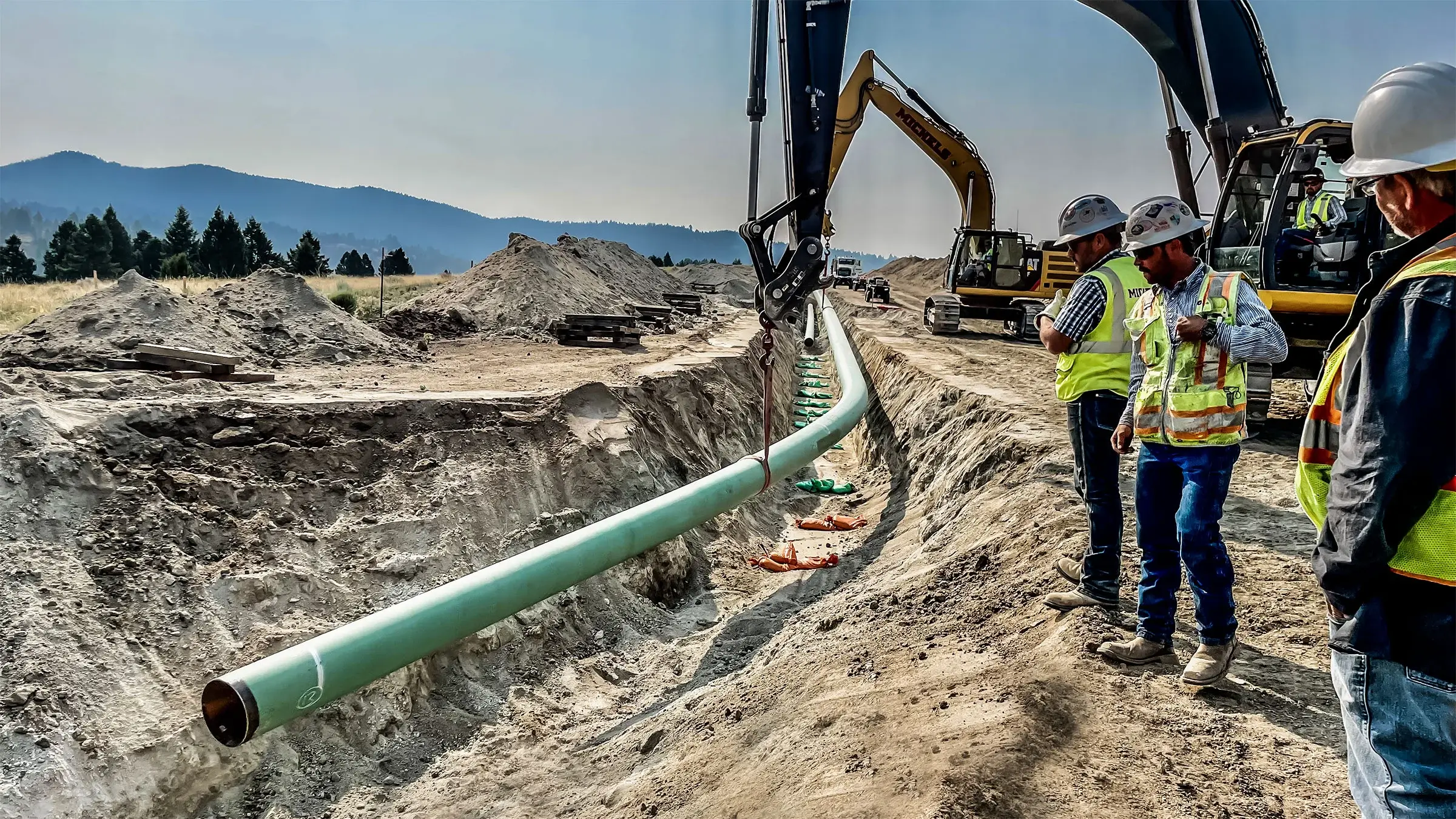The Environmental Impact With Creek Pipe HDPE installation Techniques
A Deep Dive Into Pipes Installation: Essential Elements and Factors To Consider for Successful Projects
Efficient pipe installation is an essential element of design jobs. It includes a variety of variables, from material option to precise sizing and layout. Each decision can especially affect the system's efficiency and longevity. Understanding these elements is vital for preventing costly blunders. Creek Pipe Company. As groups browse through the complexities of installation, numerous key considerations arise that warrant attention. What are the essential elements that can make or break a piping project?
Understanding Pipe Materials and Their Applications
When selecting pipe products, one have to take into consideration the specific applications and ecological problems they will encounter. Different materials use distinct homes that cater to numerous requirements. As an example, PVC is light-weight and resistant to corrosion, making it perfect for water distribution systems. Conversely, steel pipelines offer stamina and resilience, appropriate for high-pressure applications but may call for protective finishings to protect against rust.Copper pipes are preferred for pipes as a result of their antimicrobial residential or commercial properties and convenience of installation, while polyethylene is frequently used in underground applications because of its adaptability and resistance to cracking.The option of material additionally rests on temperature level extremes, chemical direct exposure, and installation area. For high-temperature applications, materials like CPVC or PEX can be helpful. Ultimately, comprehending the features and limitations of each product help in making informed choices that boost system effectiveness and longevity.
Significance of Proper Sizing and Layout
Appropriate sizing and design of pipelines are critical for guaranteeing perfect flow rates and decreasing stress loss. These variables also play a considerable duty in identifying the compatibility of materials used in the installation. A systematic technique to sizing and layout can significantly improve the efficiency and longevity of a piping system.
Influence on Flow Prices
Flow prices in piping systems are seriously influenced by the sizing and layout of the pipes. Correctly sized pipes assure that the liquid can move effectively, decreasing disturbance and making the most of circulation ability. Extra-large pipelines can result in lowered flow speeds, while small pipes might restrict circulation, leading to increased rubbing and prospective obstructions. The design needs to likewise consider variables such as pipe product, internal surface smoothness, and layout, as these add to the general effectiveness of liquid transport. In addition, the arrangement of installations and links within the system can impact circulation prices. Thorough focus to pipe sizing and design is essential for enhancing flow performance in any type of piping installation project.
Pressure Loss Factors To Consider

Just how can press loss greatly impact the efficiency of a piping system? Pressure loss is a critical aspect that can substantially diminish the efficiency of liquid transportation systems. When pipes are incorrectly sized or developed, excessive pressure loss may occur, causing decreased flow prices and enhanced power intake. This ineffectiveness can lead to higher operational expenses and potential system failings. Appropriate sizing and style are necessary to reduce stress loss, making sure that liquid characteristics stay optimal throughout the system. Engineers have to very carefully think about variables such as pipe size, length, and product to accomplish a reliable equilibrium. Eventually, attending to stress loss during the layout phase can improve reliability and durability, making it important for successful piping jobs.
Product Compatibility Factors
Stress loss is not the only variable that can influence the efficiency of a piping system; product compatibility additionally plays a significant function in total efficiency. Making sure that the products used in a piping system work with the liquids they will certainly carry is vital. Various products can react detrimentally to different chemicals, leading to corrosion, degradation, or contamination. This can inevitably compromise the stability of the system and influence its durability. Additionally, proper sizing and design are crucial to accommodate thermal development and tightening, which can better affect material performance. Assessing aspects such as temperature level, stress, and chemical make-up is critical in picking appropriate products, consequently improving system dependability and reducing maintenance prices in the long-term.
Techniques for Accurate Pipe Installation
Exact pipe installation is vital for guaranteeing system effectiveness and long life. Several techniques can enhance the accuracy of this process. First, careful dimension is crucial; installers ought to use top quality devices such as laser levels and tape measures to determine the precise lengths and angles called for. Next, appropriate pipe reducing methods, like utilizing a pipeline cutter rather than a hacksaw, guarantee clean edges that help with better links. Furthermore, using alignment devices, such as pipe jigs, can significantly enhance precision throughout assembly. It is likewise recommended to think about thermal development; permitting sufficient spacing and expansion joints can avoid future imbalances. Ultimately, the installation team must comply with maker standards to follow details recommendations associated with each pipe type. By carrying out these techniques, the probability of leaks and system failings decreases, ultimately adding to a much more reliable piping system.
Making Sure Pipe Placement and Assistance
Appropriate positioning and assistance are essential to the stability and efficiency of any piping system. Imbalance can bring about raised stress and anxiety on joints, potential leakages, and minimized effectiveness. To ensure proper positioning, it is necessary to use proper devices such as laser levels and positioning assesses. These tools help achieve accurate positioning, assuring that pipes are installed in conformity with layout specifications.Support systems need to be created to accommodate thermal expansion and contraction, in addition to the weight of the pipes and their components. Choosing the appropriate kind of supports, wall mounts, and braces is essential. Each must be set up at defined periods to protect against drooping or undue stress and anxiety on the pipelines. Regular examinations following installation can help identify any imbalances or signs of insufficient support. By prioritizing placement and assistance, one can considerably boost the toughness and functionality of the piping system.
Common Installation Blunders to Avoid

Evaluating and Evaluation for Quality Control
Although the installation procedure may appear full, detailed screening and evaluation are crucial to guaranteeing the long-term integrity of a piping system. Numerous methods are used to evaluate the integrity of the installation, including pressure tests, aesthetic assessments, and non-destructive screening (NDT) methods. Pressure tests validate that the system can stand up to functional conditions without leakages, while visual assessments help recognize any noticeable problems in the pipelines or joints. NDT methods, such as ultrasonic or radiographic screening, provide go to this web-site understandings right into the material stability without compromising the system.Additionally, documenting the screening results is necessary for future reference and compliance with sector standards. This paperwork offers not only as a top quality assurance step yet likewise as a legal guard. Ultimately, a detailed testing and evaluation method adds to the overall security and performance of the piping system, guaranteeing it fulfills the required performance requirements gradually.
Upkeep Tips for Long-lasting Pipe Systems
Preserving a pipe system needs routine assessments and monitoring to recognize prospective issues before they escalate. Executing efficient cleaning methods is also essential for avoiding accumulation that can prevent performance. With each other, these techniques add to the long life and integrity of the heavy equipment hauling near me piping framework.
Normal Examinations and Surveillance
Normal assessments and tracking are essential for making sure the durability and efficiency of pipe systems. Regular assessments can aid recognize prospective problems such as leaks, deterioration, or clogs before they escalate right into substantial issues. Carrying out a schedule for routine examinations permits for the early detection of wear and tear, enabling prompt repair services. Tracking pressure degrees and flow rates can additionally supply important insights right into system efficiency, guaranteeing that any abnormalities are attended to promptly. In addition, using sophisticated technologies, such as infrared electronic cameras or ultrasonic screening, can boost the evaluation process by supplying detailed details regarding pipe problems. Eventually, consistent tracking and evaluations contribute to the integrity and toughness of pipe systems, decreasing the threat of expensive fixings and downtime.

Efficient Cleaning Up Methods
Effective cleansing techniques are crucial for preserving the integrity and performance of pipe systems. Frequently scheduled maintenance, such as flushing systems with water, helps eliminate debris and build-up. For more persistent blockages, experts often suggest hydro jetting, which uses high-pressure water to clean pipe insides thoroughly. Chemical cleansers can also be made use of however need to be chosen meticulously to prevent destructive pipes. On top of that, using tools like pipe cams can assist in determining trouble areas and making certain effective cleaning. Keeping proper drain and staying clear of the disposal of damaging materials down pipes even more add to long life. Overall, regular cleansing practices not only boost efficiency yet likewise minimize the risk of costly repair work in the future.
Frequently Asked Inquiries
What Are the Labor Prices Related To Pipe Installation Projects?
Labor costs for pipe installation jobs differ commonly, affected by variables like task complexity, local wage rates, and required skills (Creek Pipe near me). Normally, these prices can vary from $50 to $100 per hour, relying on the labor force included
Exactly How Do Neighborhood Rules Affect Pipe Installation Practices?
Neighborhood laws greatly influence pipe installation techniques by developing safety and security requirements, product specs, and installation techniques. Compliance with these regulations guarantees project safety and security, ecological security, and adherence to regional codes, ultimately impacting total task success and click over here now expenses.
What Equipment Are Important for Pipe Installation?
Important tools for pipe installation consist of monkey wrench, cutters, and fittings. In addition, sealers, measuring tapes, and levels assure precision and longevity. Appropriate equipment advertises performance and adherence to safety and security standards during the installation procedure.
Exactly How Can Weather Issues Impact the Installation Refine?
Climate condition substantially affect the installation procedure, as extreme temperatures, rainfall, or wind can impact product stability, worker safety and security, and project timelines. Correct preparation and scheduling are essential to reduce these potential challenges throughout installation.
Are There Service Warranties for Set Up Pipe Equipments?
Guarantees for mounted pipe systems commonly vary by maker and installation contractor. Normally, they cover problems and craftsmanship for a specific period, making certain the system's reliability and supplying assurance to the homeowner.